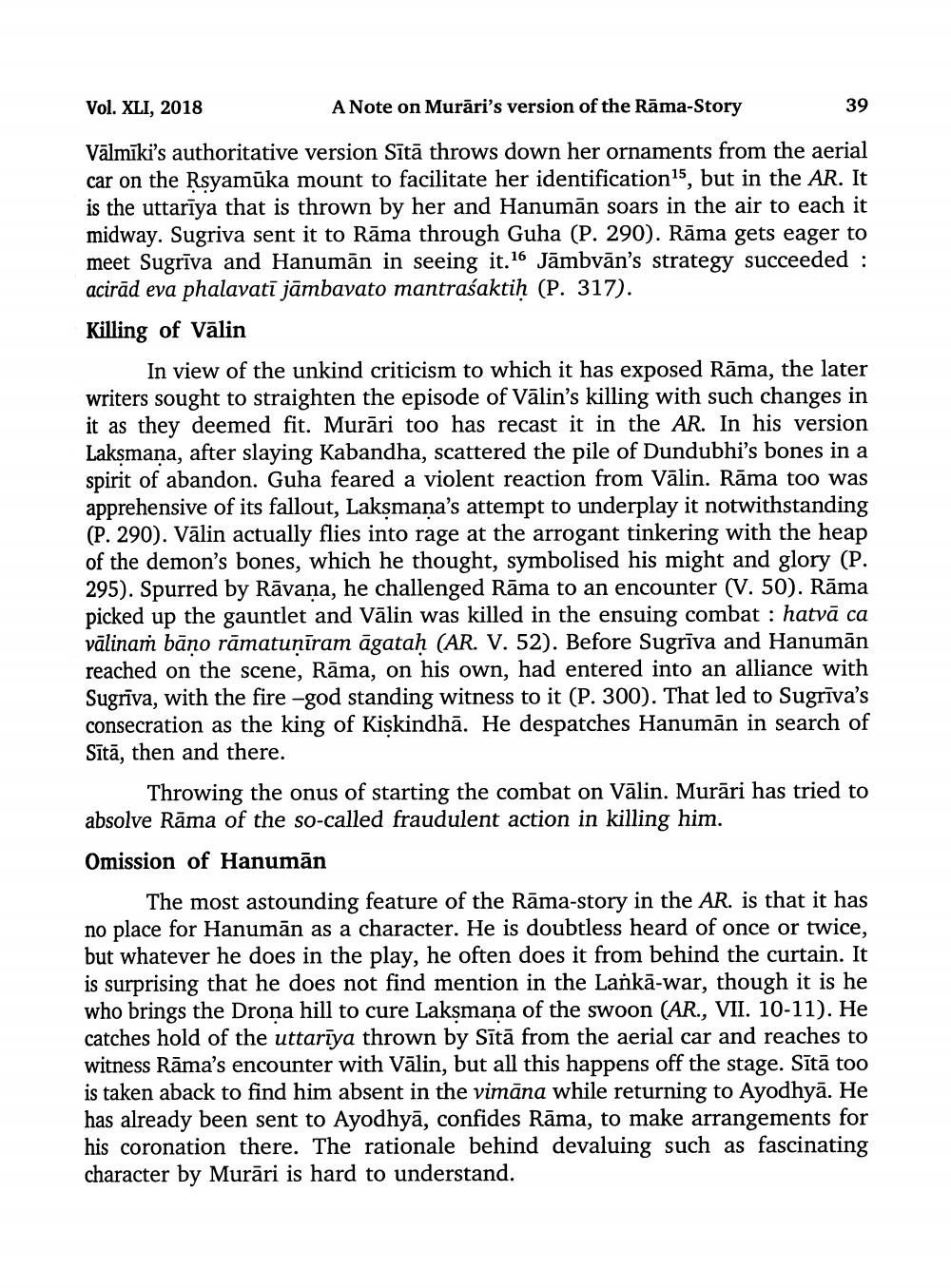________________
Vol. XLI, 2018
A Note on Murāri's version of the Rāma-Story
39
Vālmīki's authoritative version Sītā throws down her ornaments from the aerial car on the Rsyamūka mount to facilitate her identifications, but in the AR. It is the uttarīya that is thrown by her and Hanumān soars in the air to each it midway. Sugriva sent it to Rāma through Guha (P. 290). Rāma gets eager to meet Sugrīva and Hanumān in seeing it. 16 Jāmbvān's strategy succeeded : acirād eva phalavatī jāmbavato mantraśaktih (P. 317). Killing of Vālin
In view of the unkind criticism to which it has exposed Rāma, the later writers sought to straighten the episode of Vālin's killing with such changes in it as they deemed fit. Murāri too has recast it in the AR. In his version Laksmana, after slaying Kabandha, scattered the pile of Dundubhi's bones in a spirit of abandon. Guha feared a violent reaction from Valin. Rāma too was apprehensive of its fallout, Laksmana's attempt to underplay it notwithstanding (P. 290). Vālin actually flies into rage at the arrogant tinkering with the heap of the demon's bones, which he thought, symbolised his might and glory (P. 295). Spurred by Rāvana, he challenged Rāma to an encounter (V. 50). Rāma picked up the gauntlet and Vālin was killed in the ensuing combat : hatvā ca vālinas bāno rāmatunīram āgatah (AR. V. 52). Before Sugrīva and Hanuman reached on the scene, Rāma, on his own, had entered into an alliance with Sugrīva, with the fire -god standing witness to it (P. 300). That led to Sugrīva's consecration as the king of Kiskindhā. He despatches Hanumān in search of Sītā, then and there.
Throwing the onus of starting the combat on Vālin. Murāri has tried to absolve Rāma of the so-called fraudulent action in killing him.
Omission of Hanumān
The most astounding feature of the Rāma-story in the AR. is that it has no place for Hanumān as a character. He is doubtless heard of once or twice, but whatever he does in the play, he often does it from behind the curtain. It is surprising that he does not find mention in the Lankā-war, though it is he who brings the Drona hill to cure Laksmana of the swoon (AR., VII. 10-11). He catches hold of the uttarīya thrown by Sītā from the aerial car and reaches to witness Rāma's encounter with Vālin, but all this happens off the stage. Sītā too is taken aback to find him absent in the vimāna while returning to Ayodhyā. He has already been sent to Ayodhyā, confides Rāma, to make arrangements for his coronation there. The rationale behind devaluing such as fascinating character by Murāri is hard to understand.




